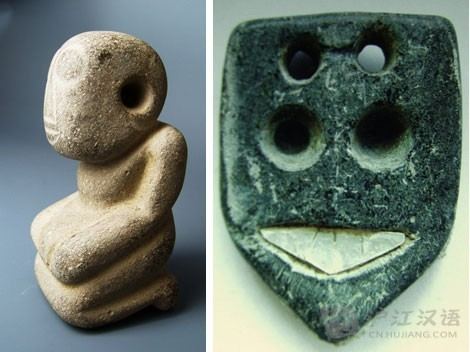 | ||
The Xinglongwa culture (興隆洼文化) (6200-5400 BC) was a Neolithic culture in northeastern China, found mainly around the Inner Mongolia-Liaoning border. Xinglongwa pottery was primarily cylindrical, and baked at low temperatures.
Map of Xing Long Wa, Aohan, Chifeng, Inner Mongolia, China
The Xinglongwa culture showed several signs of communal planning. At three Xinglongwa sites, houses were built in rows. Several Xinglongwa sites also featured a large central building. In addition, several Xinglongwa sites were surrounded by ditches.
The type site at Xinglongwa is located on the southwest side of a hill at Aohan Banner, Chifeng, Inner Mongolia; the site is named after a village 1.3 km to the southeast of the site. 120 pit-houses were discovered at Xinglongwa. Each home had a hearth at its center. Xinglongwa also featured a large building in the center of the village. Xinglongwa is the earliest discovered site in China to be surrounded by a ditch. Xinglongwa also featured an unusual burial custom, as some bodies were buried directly under the houses. Like other Xinglongwa sites, jade objects were also discovered. In the most lavish grave, a man was buried with a pair of pigs, as well as jade objects.
The recently discovered site at Xinglonggou is the only site of the culture to show evidence of any sort of agriculture, with evidence of millet remains.
